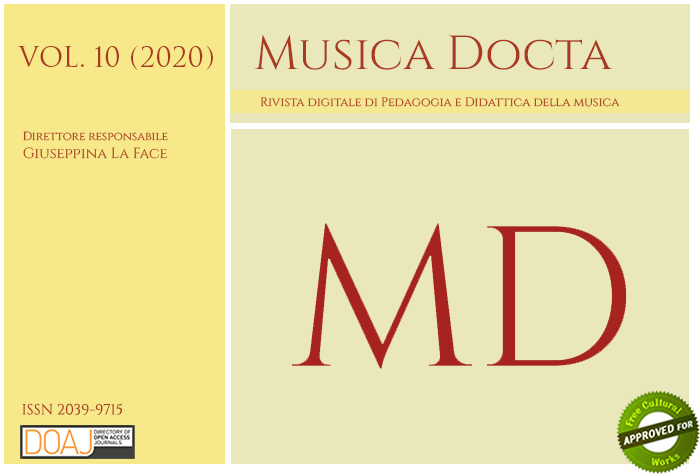Denotazione, metafora e connotazione tra ekphrasis e mélophrasis
DOI:
https://doi.org/10.6092/issn.2039-9715/11942Keywords:
Ekphrasis, Mélophrasis, Musical VerbalizationAbstract
In classical rhetoric, the name ekphrasis designates the detailed verbal description of a concrete object or subject, i.e. the transposition into words of something that is intended to be "seen" by placing it under the eyes of the reader. The privileged field of application of this device are the visual arts, in which critics are expected to render both real and fantastic images through words, translating the fixedness of visual data into the temporal sequence of a verbal discourse. In the case of musical art, ekphrasis aims to render in words sequences of sounds that are in turn temporally oriented, and in this respect diverges from a verbal representation of the visual arts, which exist in a spatial dimension. In music, however, meanings exist but are generally not denoted according to a specific semantic system, and therefore require transcoding processes and lexical loans.
Even in the poetic description of a work of visual art (e.g. the sonnets in which Marino describes the image of Daphne's metamorphosis into laurel in Bernini's marble group, animating and dramatizing it), ekphrasis can generate a flowering of poetic tropes that clearly enhance the semantic content. This enhancement of meaning is even more necessary in musical ekphrasis, which tends to shift the object of representation from physical-acoustic data, or from the specific semiographic system, to the sensations it produces in the listener. In fact, rather than insisting on the musical text, the mélophrasis - as it has recently been renamed - is ultimately directed at the effect it causes, and therefore at viewers and their internalization processes. The result is a substantial shift from denotation to connotation, through extensive (but not uncontrolled) recourse to metaphorical procedures, applied to the sound images of the composition, to the proxemics and environmental components of performance, and finally to the specific sound symbolism contained in certain scores.
Downloads
Published
How to Cite
Issue
Section
License
Copyright (c) 2020 Andrea Battistini

This work is licensed under a Creative Commons Attribution-ShareAlike 3.0 Unported License.




